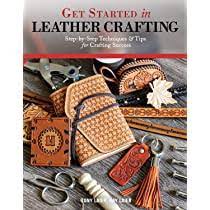
The Beginner’s Guide to Finding a Leather Repair Shop
Finding a leather repair shop can be a daunting task for beginners. But don’t worry, we’re here to help! In this beginner’s guide, we’ll outline some tips on how to find the right leather repair shop for you and what to look for.
First and foremost, it is important to understand that not all leather repair shops are created equal. Some are better equipped and experienced than others when it comes to repairing various types of leather products. So it is important to do your research before choosing a repair shop.
If you live in a large city or metropolitan area, there’s probably a good chance there are multiple leather repair shops located within close proximity. However, if you’re located in an area without many options or if you need specialized services (e.g., stitching), then you may need to venture out of your hometown or region. Fortunately, online resources (e.g., Yelp!) can be extremely helpful in narrowing down your search.
Once you’ve identified potential candidates, the next step is assessing their qualifications and experience. It’s important to choose a repair shop that has the skills and knowledge necessary to handle the specific type of leather product you have (e.g., saddle bags vs belts). Furthermore, make sure the shop is licensed and insured so you can be confident they will adhere to your expectations and procedures when repairing your item(s).
Finally, always schedule an appointment with the Repair Shop prior to bringing in your product(
can you repair a torn leather sandal
When it comes to repairing torn leather sandals, there are a few things that you will need to keep in mind.
First and foremost, always try to locate a leather repair shop that specializes in repairing torn sandals. Not all repair shops are equipped to handle this particular type of repair, and you may end up having to send your sandals elsewhere if that is the case.
Once you have located a repair shop that is qualified to handle your torn sandal situation, you will need to gather some information about the tear. This includes the size of the tear, the amount of damage done, and whether or not the stitching is intact.
Once you have gathered all of the information needed, it is time to bring your sandals in for repairs. It is important to keep in mind that not all repair shops are created equal, so be sure to ask around before making a decision.

Some common repairs that can be done on torn leather sandals include stitching the tear closed, replacing the entire sandal if necessary, and adding new padding where necessary. Be sure to ask your repair shop what they can do for you, and don’t be afraid to get multiple estimates if necessary.
can you repair scuffed patent leather
If your patent leather shoes are looking a little scuffed and worn, there is a good chance you can repair them yourself. Patent leather is a sturdy material, but it can wear down over time if it is not treated properly. Here are four tips for repairing patent leather:
1. Clean the Scuffed Area: If the scuffing is on the surface of the shoe, clean it with a damp cloth and mild soap. Make sure to remove any dirt, grease, or debris that may be lodged in the scuff.
2. Patch the Scuff: If the scuffing is inside the shoe, you will need to patch it up. Use a piece of leather or fabric that is at least as wide as the scuff and as long as the shoe’s toe box (the space at the front of the shoe near the toes). Cut out a piece that is equal in width to the scuff and slightly longer than the width of your shoe. Then, sew or glue it into place.
3. Protect the Repair: Once you have patched or repaired the scuff, you need to protect it from further damage. To do this, you can use a special type of polish known as a suede protector. This will help prevent dirt and other substances from sticking to the repair and causing it to wear away faster.
4. Repeat Steps 2 and 3 if Necessary: If your patch or repair does not hold up after